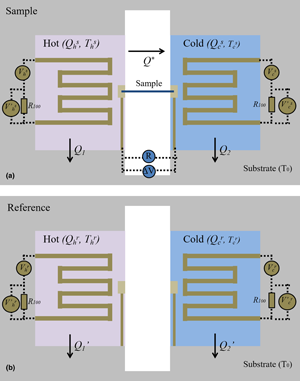Article contents
MEMS-based dual temperature control measurement method for thermoelectric properties of individual nanowires
Published online by Cambridge University Press: 03 September 2020
Abstract

The development of thermoelectric measurement technology at nanoscale is a challenging task. Here, a novel MEMS-based dual temperature control (DTC) measurement method for thermoelectric properties of individual nanowires was proposed. Different from conventional thermal bridge testing devices, this DTC thermoelectric testing device can obtain the thermoelectric properties by independently control ambient temperature and temperature difference between two ends of the nanowires through two separate resistance thermometers without auxiliary heating devices. The reliability of the model and the testing accuracy were verified by accurately measuring the thermal conductivity, electrical conductivity, and the absolute value of the Seebeck coefficient of VO2 nanowires.
- Type
- Research Letters
- Information
- Copyright
- Copyright © The Author(s), 2020, published on behalf of Materials Research Society by Cambridge University Press
References
- 2
- Cited by



